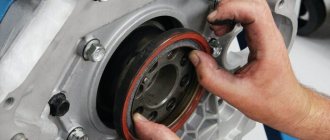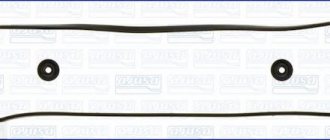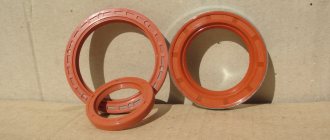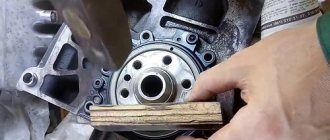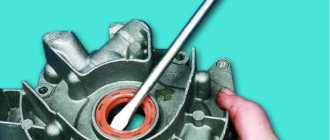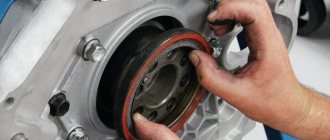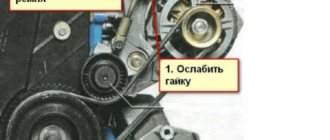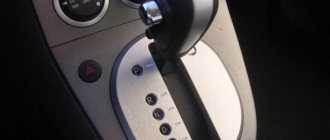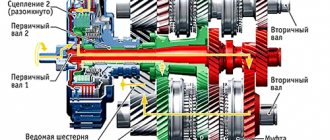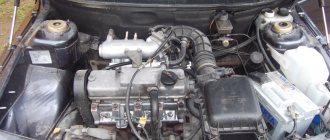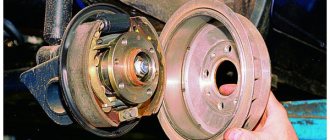When the crankshaft oil seal is completely squeezed out, a sharp drop in the oil level in the engine crankcase occurs. It is important to keep track of such moments. And, as soon as the light on the dashboard flashes, you need to turn off the engine. Owners of cars of different brands face the problem of squeezing out the oil seal. And this happens for the same reasons. The oil seal is a silicone or rubber product that has a hole that is equal to the diameter of the crankshaft. It is replaced after 150-200 thousand km. But depending on the circumstances, you have to do it earlier.
How much does it cost to replace a rear crankshaft oil seal?
So, replacing the oil seal is the price. Depending on which one needs to be replaced, the cost also varies. For example, changing the drive sealing ring costs, on average, 1,800 rubles. But replacing the rear crankshaft oil seal will cost, on average, from 6,000 to 10,000 rubles.
Interesting materials:
When does a plant reach for the sun? When does the camellia plant bloom? When did animals and plants come to land? Who eats plant seeds? Can a fluorescent lamp be used for plants? Can mushrooms be classified as plants? Is it possible to replant plants in summer? Is it possible to water plants in cold weather? Is it possible to plant a plant in a pot without holes? Do I need to feed indoor plants in the fall?
Causes of leakage
First, let's look at the reasons why it leaks from under the crankshaft oil seal. Before looking for the location of the leak, you need to figure out which specific element has failed.
A car may have two oil seals:
- Front. This part is characterized by its small size and low service life. It usually breaks and leaks more often.
- Rear. Typically, the service life of this part is longer. As a rule, it corresponds to the service life of the vehicle as a whole. The rear oil seal is larger than the front one.
Leaking crankshaft oil seal
Below are the reasons why it is necessary to remove and replace the oil seal:
- Natural wear and tear. Car owners encounter this problem when their vehicle has driven more than 100 thousand km. Natural wear is caused by vibrations generated by the crankshaft, which contributes to the destruction of the internal component of the part. After all, the oil seal is tightly attached and adjacent to the shaft. Over the course of its service life, the device will break down and may lose its shape, causing it to move away from the surface of the assembly.
- Structural destruction as a result of prolonged parking of a vehicle on the street in winter. If the car is not used, the oil seal may dry out or harden due to prolonged exposure to negative temperatures. As a result of drying, the device will not be able to fit tightly to the crankshaft.
- New parts leak due to manufacturing defects. If the oil seal does not last long, the problem is the poor quality of the material used to develop it. To prevent such a problem, experts recommend not using parts from unknown manufacturers on cars.
- Errors made during installation. The problem occurs when the device is unevenly mounted on the crankshaft. When installing, the oil seal is driven into the seat using a hammer with gentle blows. But it is better to use a special installation tool, this will make the process easier and will not damage the device.
- Problems in the operation of the power unit. The appearance of defects in engine operation, such as an increase in crankcase gas pressure, can lead to leakage. Because of this, the oil seal is forced out. At the point where the part adheres to the crankshaft, a gap appears through which engine fluid escapes.
Visual instructions for replacing the device are provided by the KozTas channel.
How to determine the location of the leak
Our compatriots often confuse oil seal damage with oil filter failure.
Seeing traces of leaks, many car enthusiasts immediately change the oil seal without understanding the reason. As a result, there is no need to replace the oil filter. Before changing the device and eliminating traces of leakage, you need to decide which part has failed. If traces of oil appear in the rear part of the power unit, you should perform a visual diagnosis of the sump, as well as the transmission unit. Leakage can also occur in the gearbox, so drop some oil on the water. If the gearbox seal leaks, the lubricant will immediately spread across the surface of the water, and the fluid from the engine will remain on it in the form of a drop.
Signs of a leak include a lack of engine oil in the lubrication system. If you check the oil level and find that it is not enough, do not immediately add fluid. Check the motor for leaks, after which you can fix the problem.
What to do in such cases?
As mentioned above, one of the likely problems may be incorrect installation of the element. In particular, if the inner side of the rubber band is bent, then liquid can flow through it. Thus, the element only needs to be changed, despite the fact that it is relatively new.
Replacing the rear oil seal
- Dismantle the gearbox (use the operating manual for your vehicle to do this).
- Then take a screwdriver or any other object with a sharp tip, a regular knife will do. Remove the failed oil seal. Be careful with the work surface when doing this.
- Clean the surface of the crankshaft. Please note that this can only be done with a rag. Some “craftsmen” clean the crankshaft with sandpaper. Under no circumstances should this be done, as this will cause the crankshaft to fail faster.
- Install a new oil seal in place of the old one.
- Install the gearbox.
Replacing the front oil seal
- Remove the pulley block according to the vehicle's operating instructions.
- Next, you will need to remove the timing belt cover.
- Having done this, remove the rubber belt itself.
- After this, remove the drive toothed pulley.
- Only after this you will see the oil seal: it needs to be replaced. Do not forget about the correct installation of the element.
- After replacing it, reassemble everything in reverse order.
Operating high-quality motor oil
Using a quality lubricant is the first thing you need to do after you have removed a failed oil seal. You will also need to flush the car’s internal combustion engine itself:
- Locate the engine oil drain plug underneath the vehicle.
- Drain the used engine fluid into a container.
- Screw in the drain plug, open the hood and unscrew the filler cap.
- Fill the engine with flushing fluid.
- Screw on the filler cap and start the engine: you should drive it for at least 10 kilometers. The more, the better, since flushing must completely pass through the entire system and clean its components as much as possible from deposits and carbon deposits.
- After this, drain the used flush and fill with new engine oil. Don't forget to change the filter.
If the problem of consumables leaking from under the crankshaft oil seal was precisely due to the use of low-quality oil, then replacing it should eliminate the problem.
What to do in such cases?
As mentioned above, one of the likely problems may be incorrect installation of the element. In particular, if the inner side of the rubber band is bent, then liquid can flow through it. Thus, the element only needs to be changed, despite the fact that it is relatively new.
Replacing the rear oil seal
- Dismantle the gearbox (use the operating manual for your vehicle to do this).
- Then take a screwdriver or any other object with a sharp tip, a regular knife will do. Remove the failed oil seal. Be careful with the work surface when doing this.
- Clean the surface of the crankshaft. Please note that this can only be done with a rag. Some “craftsmen” clean the crankshaft with sandpaper. Under no circumstances should this be done, as this will cause the crankshaft to fail faster.
- Install a new oil seal in place of the old one.
- Install the gearbox.
Replacing the front oil seal
- Remove the pulley block according to the vehicle's operating instructions.
- Next, you will need to remove the timing belt cover.
- Having done this, remove the rubber belt itself.
- After this, remove the drive toothed pulley.
- Only after this you will see the oil seal: it needs to be replaced. Do not forget about the correct installation of the element.
- After replacing it, reassemble everything in reverse order.
Operating high-quality motor oil
Using a quality lubricant is the first thing you need to do after you have removed a failed oil seal. You will also need to flush the car’s internal combustion engine itself:
- Locate the engine oil drain plug underneath the vehicle.
- Drain the used engine fluid into a container.
- Screw in the drain plug, open the hood and unscrew the filler cap.
- Fill the engine with flushing fluid.
- Screw on the filler cap and start the engine: you should drive it for at least 10 kilometers. The more, the better, since flushing must completely pass through the entire system and clean its components as much as possible from deposits and carbon deposits.
- After this, drain the used flush and fill with new engine oil. Don't forget to change the filter.
If the problem of consumables leaking from under the crankshaft oil seal was precisely due to the use of low-quality oil, then replacing it should eliminate the problem.
How to determine the location of the leak?
Any car can use two crankshaft oil seals - front and rear. The first one fails much more often, and the service life of the second one usually corresponds to the service life of the entire car.
- If traces of engine fluid are found in the rear of the engine, then you need to check the integrity of the sump and transmission module. If the transmission unit and pan are intact, then the rear oil seal must be replaced.
- A lubricant leak may occur in the transmission unit. To check, you need to take the oil that is leaking and drop it into water. If the gearbox seal is worn out, the lubricant will immediately spread over the surface of the fluid. The oil from the engine should remain in the form of a drop after entering the water.
Photo gallery: crankshaft seal leak locations
Video: how to find out the cause of a crankshaft oil seal leak
The video, shot by the Alexander Mart channel, explains why the crankshaft oil seals leaked and how to determine the cause of the malfunction.
What are the dangers of squeezing out oil?
The main consequence is engine oil starvation. Lack of lubrication will lead to harsher friction of internal components and their rapid wear. The lack of working fluid can completely damage the unit.
How much oil can leak?
The volume of oil released from under the crankshaft oil seal depends on how badly the part is worn (from a few drops to liters per 1 thousand kilometers). If you do not add fluid to the power unit, all the lubricant may come out.
Front oil seal
The main consequence of untimely replacement will be oil leakage and contamination of the power unit crankcase. This is due to the fact that the lubricant will attract wear products. This problem can cause the timing belt to break and damage the valves.
In this case you will need:
- change the torn timing belt;
- change the cylinder head gasket;
- replace the valves and grind them in;
- dismantle and grind the cylinder head of the internal combustion engine, since after replacing the gasket it will not be smooth and will not be able to come into contact with the engine.
It must be taken into account that regular use of a vehicle with damaged oil seals will cause damage to the pistons. Minor defects will not lead to serious problems, but the piston may be punctured by the valve, which will require major repairs.
When carrying out a capital inspection, the car enthusiast will have to replace:
- damaged or defective piston;
- failed crankshaft valve;
- all liners arranged in a circle;
- engine crankcase gasket;
- bolts securing the cylinder head (they must be tightened in accordance with the specific order and force specified in the service manual);
- pan gasket.
You will also need to add oil to the engine and antifreeze to the cooling system.
Rear oil seal
If the rear crankshaft oil seal wears out or fails, you will have to:
- remove the transmission unit;
- dismantle the clutch mechanism assembled with the drive;
- dismantle the flywheel mechanism (dismantling of these units is required in order to gain access to the oil seal).
Regular operation of a car with a damaged part will lead to the fact that engine oil can flood the clutch system, as a result, all the friction characteristics of the device will be impaired.
This will lead to the following problems:
- serious reduction in engine power;
- increased fuel consumption (when you press the gas pedal, the car will drive at the same speed, but gasoline consumption will be higher);
- the driver will have to regularly add lubricant to the engine.
Is it possible to drive with a leak?
It is recommended to stop operating a car with a leaking crankshaft oil seal or at least limit it until the problem is completely eliminated.
Short-term use of the vehicle is possible by regularly checking the level and adding oil to the engine. The need to limit the operation of the car is due to the fact that the engine will gradually become clogged and will need to be flushed. In addition, oil can get on the contacts of electrical circuits and equipment, which can lead to malfunction.
